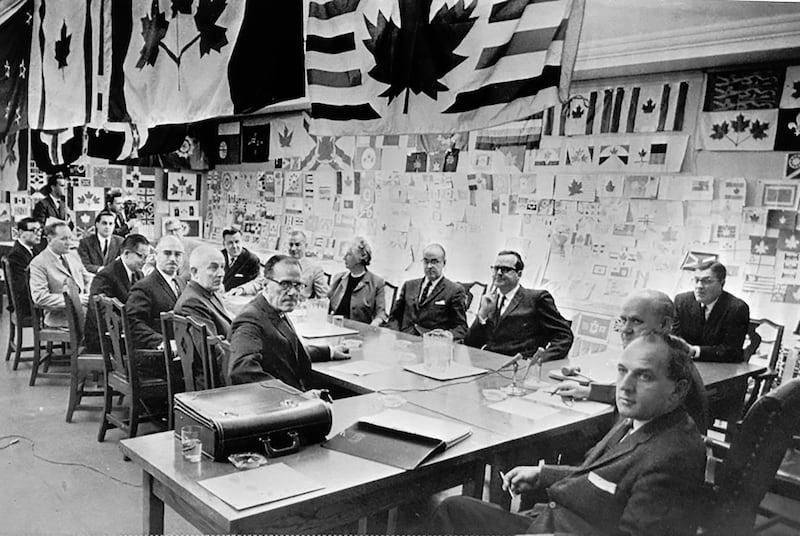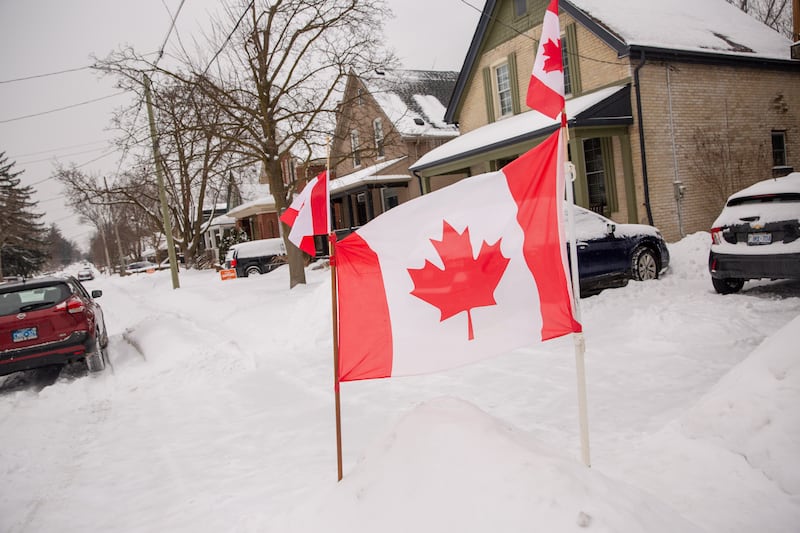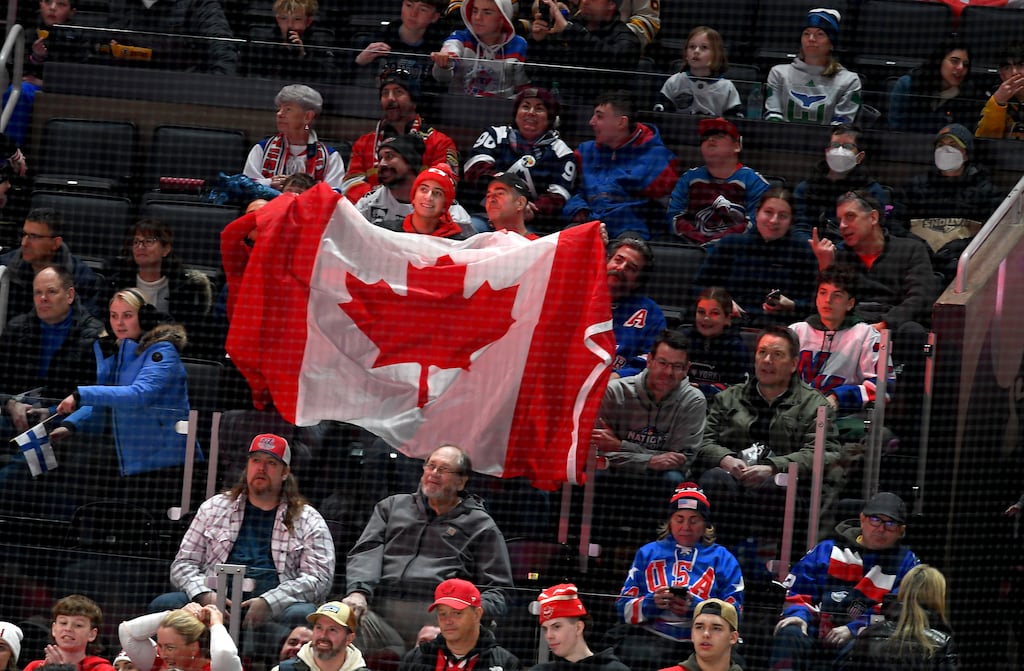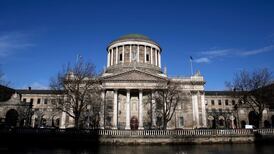On a good day in February, Debbie Hartlen might sell one Canadian flag at her workshop in Dartmouth, Nova Scotia. Now, daily sales have hit roughly 300 flags, and that’s not counting her larger online business.
US president Donald Trump’s plan to impose crippling tariffs on Canadian exports is seen as a devastating threat to many Canadian businesses and workers. His warning on trade – combined with his repeated calls for the United States to annex Canada – have the country’s flag makers struggling to keep up with suddenly soaring demand.
“Isn’t it wonderful?” said Hartlen, who owns The Flag Shop Nova Scotia. “Thank you, Trump. Who would have thought we’d be saying that?”
The renewed interest in Canada’s maple leaf flag, fuelled by intense opposition to Trump’s idea of making Canada the 51st state and his economic threats, comes as the red and white Canadian banner marks its 60th anniversary.
And for a nation where flag waving is less a part of life than in the United States and flags are generally less conspicuous, the Trump-fuelled resurgence of Canadian patriotism has also revived the Canadian flag’s image.

The maple leaf flag, often flown upside down or from hockey sticks, became the defining symbol used by protesters who occupied and paralysed Ottawa, Canada’s capital, for nearly a month in 2022 in response to Covid-19 restrictions.
As a result, many Canadians have shied away from displaying their national flag out of concern that they would be seen as endorsing the protests.
But things started to change as national flag day in Canada, which is celebrated February 15th, approached. Usually, the day passes by largely unnoticed. This time, against the backdrop of tariff threats and Trump’s criticisms of Canada, including referring to prime minister Justin Trudeau as Governor Trudeau, five former prime ministers have called on Canadians “to show the flag as never before”.
The government held 60th birthday celebrations, which included skaters holding aloft a giant flag down a 19th-century canal in Ottawa that doubles as a giant ice skating rink during the winter. And throughout the country, Canadians are doing something many rarely do: flying flags outside their homes.
L’étendard Flags and Banners, a company based in Quebec City, makes about 25,000 Canadian flags for the federal government and 10,000 more for other customers and uses what is typically the slow winter season to build up inventory leading up to Canada Day on July 1st.
This year demand for flags is so high that the company may need to hire extra workers to cope with the surge, said Mario Trahan, one of the company’s owners.
“There’s a peak just before July 1st but it’s always the same pattern every year,” said Trahan, whose company has been in the flag business for 30 years. “But we haven’t seen a rush like this.”

Before the current version of the flag was adopted, Canada had spent nearly a century trying to create and agree on a national flag that was not simply carried over from its past as a British colony.
“English Canadians in particular were divided about their identity,” said Forrest Pass, a vexillologist, or flag scholar, at Library and Archives Canada, the national archive. “British imperial identity still loomed large.”
The result, he said, was that Canada first used Britain’s Union Jack, which is officially known as the royal union flag, as its national flag. In 1892, the British Admiralty officially allowed Canadian commercial ships to fly a red flag that was known as the Canadian Red Ensign, with the Union Jack in one corner and a smaller shield of Canada that underwent many design changes.
Soon, the Canadian Red Ensign was being used on land, particularly by the military during the first World War, before gaining official status in 1946.
Many Canadians regarded the red ensign as mostly a “place holder”, said Pass, whose dissertation was on flags.
Various committees at various times considered thousands of proposed Canadian flags, including one, Pass said, that featured a woman in a bikini. “It was something of a cottage industry, the production of new flag designs,” he said.
It was Lester B Pearson, the Nobel Peace Prize laureate for his work resolving the Suez crisis and past Liberal prime minister, who ultimately selected the single Maple Leaf design.
But it was a hard sell at first. The debate in Parliament to adopt it was described by one historian as “among the ugliest in the House of Commons history” because of the strong opposition from members of parliament to diluting British heritage.
But once the debate was settled and the design approved, Canadians quickly warmed to their new flag, Pass said.
During the Vietnam War, anecdotal stories about American travellers sewing maple leaf patches on to their backpacks before heading abroad became a source of cross-border resentment, particularly given Canada’s strong opposition to the war.
But the protests in Ottawa in 2022, which became known as the trucker convoy – and that polls showed most Canadians strongly opposed – hurt the country’s romance with its flag.
“The co-option of the flag by a small segment of the population created a lot of discomfort for Canadians,” said Heather Nicol, the director of the Canadian studies school at Trent University in Peterborough, Ontario. “A lot of people felt like: ‘Well I don’t know if we want to look at that flag or fly that flag again.’”
Still, in one downtown Ottawa neighbourhood that endured the earsplitting, late-night air horn honking by protesting truckers, Sam Hudson never took down the four Canadian flags that largely cover the window of the tailor shop he opened 15 years ago after emigrating from Jordan. (There is also a Scottish flag in the window in honour of his first customer.)
“I kept them because they are the symbol for our country,” Hudson said. “It’s not a symbol for certain people. I respect this flag. It’s a symbol for 40 million people who live in this land.”
Now with Trump’s denigration of Canada, Hudson said he wants more Canadians to follow his example and start displaying the flag.
“Everywhere, any time, all the year,” Hudson said before hemming some trousers. “This is our ID.” − This article originally appeared in The New York Times.




















